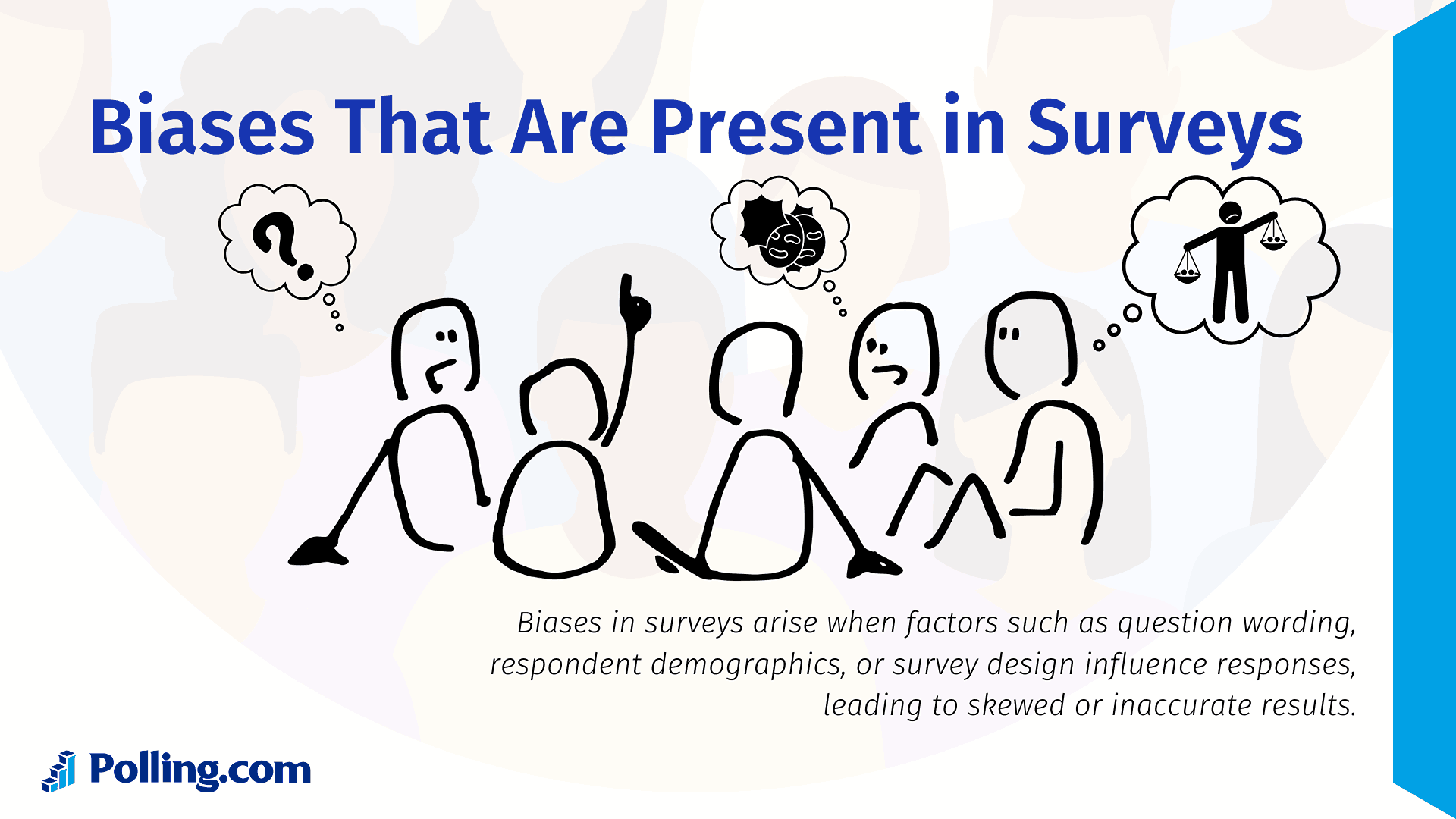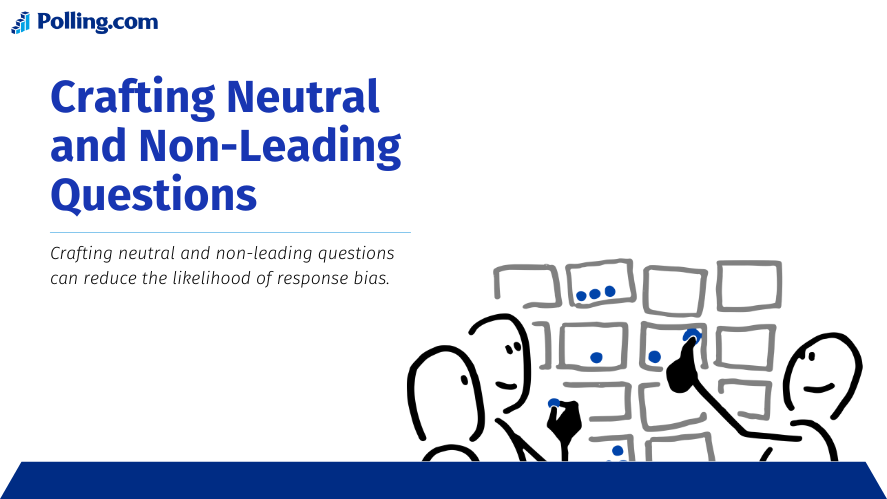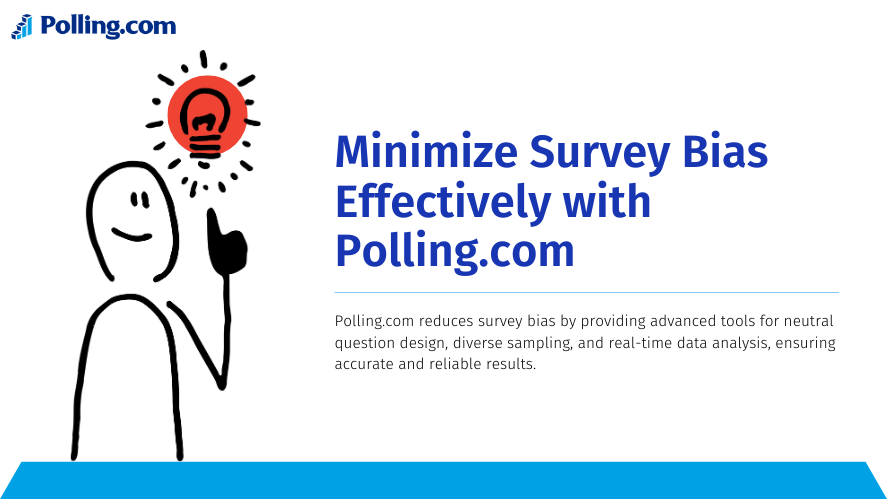
Biases That Are Present in Surveys and How to Avoid Them
Biases that are present in surveys significantly impact the accuracy and reliability of collected data. These biases can skew results, mislead decision-making processes, and undermine the credibility of the insights gathered.
Understanding and addressing survey biases is crucial for achieving reliable and valid outcomes, whether in market research, academic studies, or public opinion polling.
Minimizing bias ensures that survey results accurately reflect the target population’s true sentiments, behaviors, and preferences.
This article delves into the common types of survey bias, their implications, and actionable strategies to mitigate them.
Common Types of Biases in Surveys
Bias in surveys arises from various sources, ranging from respondent behavior to survey design flaws. Below are the most prevalent survey bias types, along with examples and insights on their causes.
Response Bias
Response bias occurs when respondents answer questions inaccurately, often due to social desirability or poorly framed questions. People may provide answers they believe are more acceptable or expected rather than what they truly think or feel.
- Example: A respondent may overreport recycling habits or underreport unhealthy behaviors like smoking.
- Avoidance Tip: Crafting neutral and non-leading questions can reduce the likelihood of response bias.
For example, instead of asking, “How often do you exercise?” ask, “What activities do you typically engage in for physical fitness?”

Selection Bias
Selection bias occurs when certain groups in the target population are over- or underrepresented in the survey sample. This often results from using a convenience sample instead of a random or stratified sample.
- Example: An online survey may exclude individuals who lack internet access, skewing results towards more tech-savvy demographics.
- Avoidance Tip: Utilize random sampling techniques and ensure diverse representation by targeting various demographics through multiple channels.
Sampling Bias
Sampling bias is closely related to selection bias but focuses on how the sample itself is chosen. It arises when the sampling method does not accurately capture the diversity of the population being studied.
- Example: Conducting a street survey during working hours may exclude full-time workers, skewing responses toward retirees or unemployed individuals.
- Avoidance Tip: Employ stratified random sampling to ensure all subgroups of the population are adequately represented.
Interviewer Bias
Interviewer bias occurs when the behavior, tone, or non-verbal cues of the interviewer influence respondents’ answers. The way questions are asked or interpreted can lead to unintended bias.
- Example: An interviewer nodding or smiling during certain answers may lead respondents to believe they should continue in that vein.
- Avoidance Tip: Train interviewers to maintain a neutral tone, avoid leading questions, and adhere strictly to the survey script.
Cultural Bias
Cultural bias arises when survey questions reflect assumptions or norms specific to one culture, making them less relevant or understandable to other cultures.
- Example: A survey conducted in English may exclude non-English speakers, or regional phrasing may confuse participants.
- Avoidance Tip: Translate surveys into multiple languages and test the phrasing to ensure cultural neutrality.
How Bias Impacts Survey Results
The presence of biases that are present in surveys can severely distort data interpretation and decision-making. When survey biases infiltrate data collection and analysis, they lead to inaccurate conclusions, with real-world consequences such as:
- Flawed Business Decisions: A biased survey might misrepresent customer needs, leading to unsuccessful product launches.
- Misinformed Political Campaigns: Skewed polling data can mislead campaign strategies, failing to address the actual concerns of the electorate.
- Academic Missteps: Research studies may lose credibility when findings are based on biased survey data.
Survey Bias Examples in Real Life
- Political Polling Errors: Overrepresentation of certain demographics led to unexpected outcomes in major elections, such as the 2016 U.S. presidential race.
- Marketing Misfires: A beauty brand failing to account for cultural preferences in surveys might alienate certain markets.
Strategies to Reduce Survey Bias
Reducing bias in surveys is achievable through thoughtful design and meticulous implementation. Here are proven strategies for avoiding bias in survey questions and ensuring robust results.
Design Neutral Questions
The foundation of unbiased surveys lies in clear and neutral question design. Avoid leading or loaded questions that may push respondents toward specific answers.
- Example of a Biased Question: “Don’t you think recycling is essential?”
- Unbiased Alternative: “What are your views on recycling?”
Use Random Sampling
Random sampling ensures that every individual in the population has an equal chance of selection, improving the representativeness of your survey results.
- Tip: Stratify your sample by key demographics, such as age, gender, or region, to achieve more nuanced insights.
Train Interviewers
Invest in interviewer training programs to minimize unconscious biases that could influence responses. Proper training includes maintaining neutrality, asking open-ended questions, and avoiding suggestive language.
Pilot Testing
Pilot testing involves conducting a trial run of the survey to identify and address potential biases. This step helps refine questions and improves clarity.
- Tip: Use feedback from pilot testing to adjust ambiguous questions and ensure the survey aligns with your objectives.
Leverage Online Tools
Modern survey platforms, such as Polling.com, offer features that significantly reduce bias:
- Randomized Question Order: Prevents order effects where earlier questions influence responses to later ones.
- Automated Data Cleaning: Detects and flags suspicious or inconsistent responses for review.
- Multilingual Support: Ensures inclusivity and cultural relevance.
The Role of Polling.com in Minimizing Bias

Polling.com is a leading platform dedicated to reducing bias in survey design and data collection. By offering advanced tools and technologies, Polling.com ensures your survey results are both accurate and actionable.
Key Features of Polling.com
- Dynamic Question Design: Allows for real-time adjustments based on respondent feedback.
- Bias Detection Algorithms: Identifies and flags potential sources of bias during the survey process.
- Comprehensive Reporting: Provides insights into the diversity and representativeness of your sample.
Competitive Edge
Unlike traditional survey platforms, Polling.com specializes in mitigating biases through its state-of-the-art features. Its focus on inclusivity, neutrality, and advanced analytics makes it a preferred choice for researchers and businesses alike.
Conclusion
Understanding and addressing biases that are present in surveys is essential for collecting reliable and actionable data. By identifying common survey bias types such as response bias, selection bias, and cultural bias, you can take proactive steps to mitigate their impact. From crafting neutral questions to leveraging cutting-edge tools like Polling.com, designing an unbiased survey is within reach.
To ensure the accuracy of your next survey project, consider using Polling.com. Its comprehensive suite of features is designed to eliminate bias and provide you with the confidence to make informed decisions. Start your journey toward bias-free surveys today!
